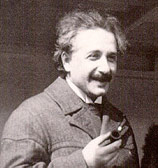
World Road Web Services utilizes a team of highly skilled IT professionals and contractors, operating under the leadership of Keith C. Smith Jr., who brings over 20 years of experience in the communication technology industry, including work with Motorola Communications, the International Spy Museum and the provisioning and operation of an information technology center in Chicago, Illinois.
Having long worked with underserved, minority businesses, non-profits and political candidates in the Midwest and Mid-Atlantic regions, we have always provided web design, mobile application creation, information technology and SEO services at affordable rates.
We bring a unique style and look to each of our clients, while maintaining a strong emphasis on capturing useful and relevant digital technologies.
Our teams experience includes working with HTML5, JQuery, CSS, PHP, Wordpress, Drupal, Joomla, Java, iTunes and GoogleStore.

Surprising as it may be to most non-scientists and even to some scientists, Albert Einstein concluded in his later years that the past, present, and future all exist simultaneously. In 1952, in his book "Relativity", in discussing Minkowski's Space World interpretation of his theory of relativity, Einstein writes:
Since there exists in this four dimensional structure [space-time] no longer any sections which represent "now" objectively, the concepts of happening and becoming are indeed not completely suspended, but yet complicated. It appears therefore more natural to think of physical reality as a four dimensional existence, instead of, as hitherto, the evolution of a three dimensional existence.
Einstein's belief in an undivided solid reality was clear to him, so much so that he completely rejected the separation we experience as the moment of now. He believed there is no true division between past and future, there is rather a single existence. His most descriptive testimony to this faith came when his lifelong friend Besso died. Einstein wrote a letter to Besso's family, saying that although Besso had preceded him in death it was of no consequence, "...for us physicists believe the separation between past, present, and future is only an illusion, although a convincing one."
I can testify that Einstein's speculations revealed here concerning infinite spaces in motion do at least carry us in the right direction in how they suggest space might have an unseen and possibly infinite content. Similar ideas were introduced by David Bohm, who claimed there are two kinds of order in nature, what he called explicate order and implicate order. Implicate order for Bohm was a way of acknowledging how quantum mechanics reveals a hidden order where our world is influenced by the whole of all possible states. However, that order is much more visible than Bohm ever realized, as explained in part two.
Unfortunately it wasn't until Einstein died that scientists began to consider the a Many Worlds Theory in science. It's safe to say that in Einstein's time we were still getting used to the idea of the Big Bang, adjusting to the ever more visible vast sea of other galaxies, and the possibility of alien life on other planets. The universe and reality were still primarily considered purely solid and material based. Quantum theory, which eventually led to the theory of many worlds, had not yet fully withstood the test of time. Einstein even rejected its implications, saying "God does not play dice" with the world, even as he himself established that there is more to the universe than a single evolving moment of now.
In my explorations of timelessness I reveal that ordinary space is not merely full of other empty spaces, but empty space is actually the whole of all physical realities; all the universes of the many worlds theory. Profound as it may be, if the theories I propose are correct, space is full, rather than empty. Material things are less than the fullness of space. In fact, it may be that space must include all possibilities in order to seem empty to us. So in summary, the universe we see is just a fragment nested in a timeless (everything) whole, rather than a single material world magically arisen above some primordial nothing. All universes exist without beginning or end in the ultimate arena of time, and each moment we experience exists forever.



